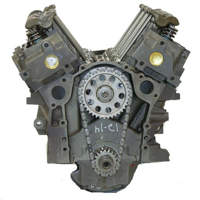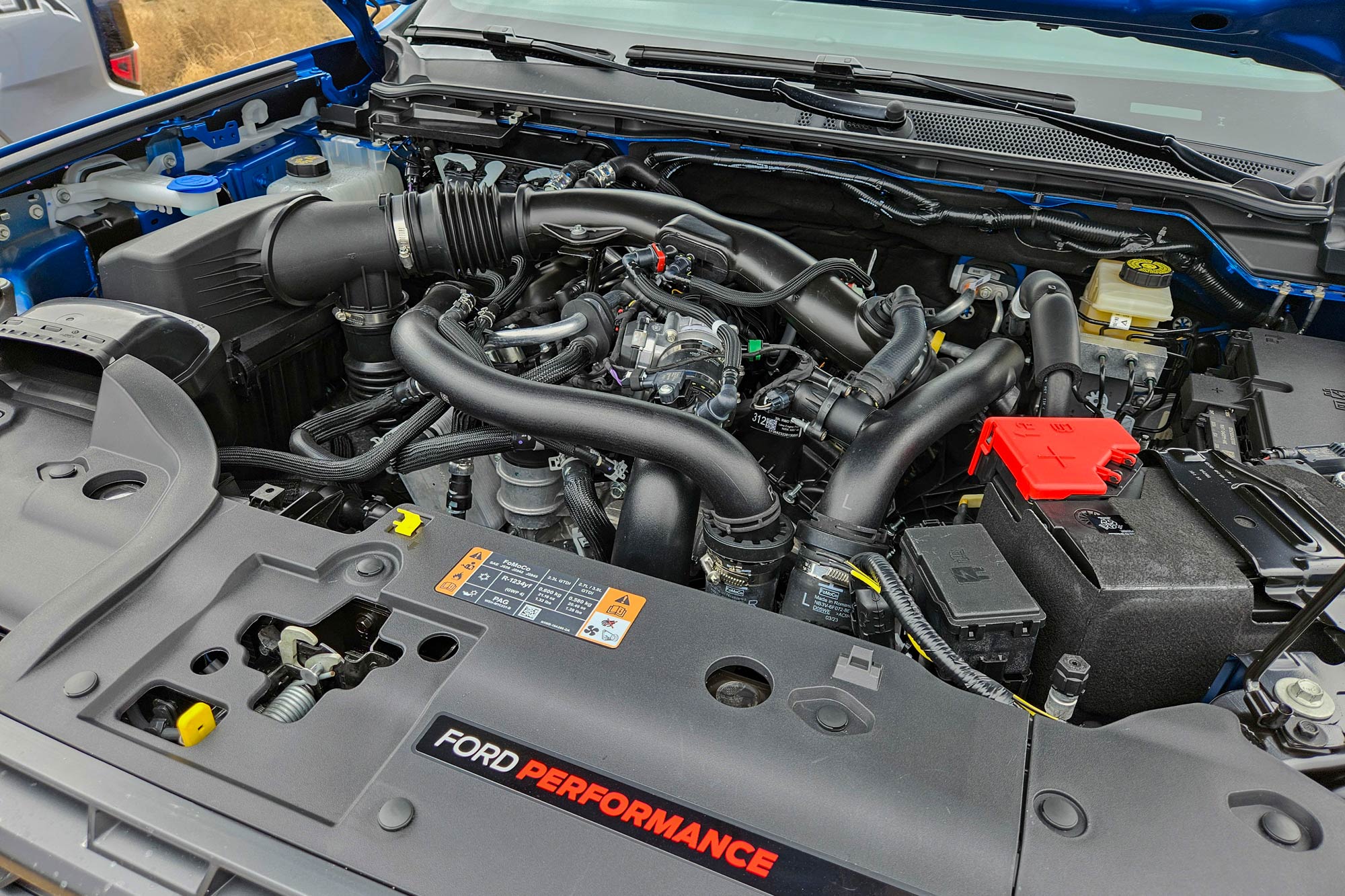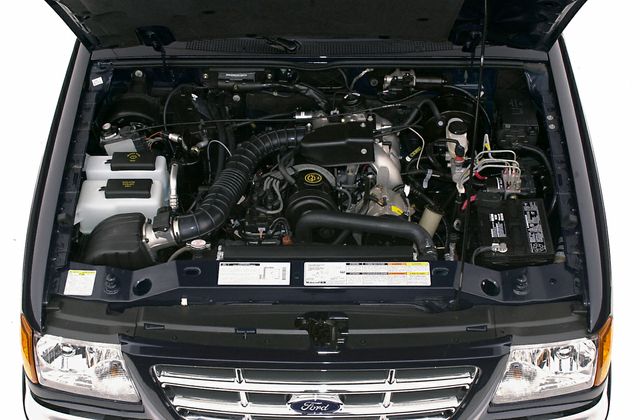Why the 2.2 Ford Ranger Engine Is a Popular Choice for Rugged and Reliable Performance
Why the 2.2 Ford Ranger Engine Is a Popular Choice for Rugged and Reliable Performance
Blog Article
Comprehending the Essentials of Vehicle Engines: Kinds, attributes, and features

Introduction of Cars And Truck Engines
A vehicle engine acts as the heart of an automobile, transforming fuel right into mechanical power to push it ahead. This elaborate system comprises numerous parts that function in unison to guarantee ideal performance and performance. The fundamental procedure of a vehicle engine involves the inner combustion process, wherein gas and air are blended, ignited, and eliminated to develop power.
The engine's design can substantially influence its efficiency, fuel efficiency, and emissions. Secret elements include the cylinder block, pistons, crankshaft, and camshaft, each playing an important duty in the engine's overall feature.
Along with these components, engines often make use of numerous systems such as gas shot, ignition, and cooling systems to boost efficiency and longevity. Recognizing the basic technicians of automobile engines is crucial for detecting problems and doing maintenance, ultimately contributing to the automobile's integrity and effectiveness gradually.

Kinds of Car Engines
Cars and truck engines can be classified right into several types based upon their design, fuel type, and functional principles. 2.2 ford ranger engine. The most common categories include inner burning engines (ICE), electrical engines, and crossbreed engines
Internal combustion engines, which can be additional separated right into fuel and diesel motor, operate by sparking a fuel-air mix to create power. Gas engines are typically lighter and smoother, while diesel motor are a lot more fuel-efficient and deal higher torque.
Electric engines make use of electric power stored in batteries to power an electrical motor, giving immediate torque and zero exhausts during procedure. As modern technology advances, electric vehicles (EVs) are progressively ending up being preferred for their environmental benefits and reduced running prices.
Hybrid engines combine aspects of both inner combustion and electric engines, permitting versatile power resources and enhanced fuel efficiency. They can run in various settings, utilizing either the fuel engine, the electrical motor, or both all at once.
Each kind of engine has distinctive benefits and disadvantages, influencing their application in different vehicle types and market sectors, from small automobiles to sturdy vehicles. Recognizing these kinds is crucial for making informed choices pertaining to automobile option and efficiency expectations.
Engine Functions Described
Understanding engine features is essential for grasping exactly how automobiles operate effectively. At the core of any kind of interior combustion engine lies the essential procedure of converting fuel right into power. This process begins with the intake stroke, where air and fuel are attracted into the burning chamber. Following this, the compression stroke presses the air-fuel mix, increasing its temperature and stress.
The ignition happens next, igniting the combination and visit here developing a rapid expansion of gases. This force drives the piston down throughout the power stroke, which eventually converts into the rotational movement of the crankshaft. The exhaust stroke after that removes the spent gases from the chamber, making method for a new cycle to commence.
Along with these main functions, engines likewise include systems that take care of cooling and lubrication, ensuring ideal operational temperature levels and reducing rubbing between relocating components. This intricate interplay of features enables the engine to generate the power essential for car propulsion while preserving effectiveness and dependability. Recognizing these functions offers useful insight into the complexities of vehicle design and boosts the capability to detect and resolve engine-related concerns successfully.
Trick Engine Attributes
Engine design includes numerous key attributes that dramatically affect resilience, effectiveness, and performance. One of the most critical elements is the engine setup, which includes inline, V-type, and level styles. Each setup affects the engine's dimension, power, and balance output, consequently influencing overall car characteristics.
One more important attribute is the engine variation, referring to the complete quantity of all cyndrical tubes. Larger variations generally generate even more power yet may jeopardize gas effectiveness. Engine materials additionally play a pivotal see this page role; light-weight and high-strength products, such as light weight aluminum and magnesium alloys, improve efficiency without including extreme weight.
The kind of gas injection system used-- such as multi-port or direct injection-- influences burning efficiency and discharges. Supercharging and turbocharging are attributes that enhance engine efficiency by compeling added air into the burning chamber, boosting power result without dramatically enhancing engine dimension.
Lastly, the presence of innovative engine management systems maximizes fuel-air mix and ignition timing, contributing to smoother operation and much better gas economic climate. Jointly, these attributes specify an engine's capacities, setting the structure for its performance and durability in a competitive automobile landscape.
Maintenance Tips for Engines
Appropriate engine maintenance is crucial for making sure optimal efficiency and durability, as neglecting routine care can lead to substantial issues down the line. To keep your engine efficiently, begin with normal oil changes, generally every 3,000 to 7,500 miles, relying on the kind of oil utilized. Fresh oil lubricates engine elements, decreasing rubbing and wear.
Additionally, monitoring coolant degrees is vital to stop getting too hot. Ensure that the coolant is topped up and remains in good condition to preserve reliable temperature regulation. Regularly change and evaluate air and fuel filters, as clogged up filters can hinder air movement and gas shipment, endangering engine performance.
Additionally, take note of ignition system and ignition systems. Faulty or worn stimulate plugs can result in misfiring and lowered performance. Checking the battery terminals and connections for rust is likewise essential, as a weak battery can affect engine beginning.

Conclusion
In recap, a thorough understanding of auto engines encompasses various kinds, features, and key features that substantially influence automobile performance. Internal burning engines, together with electric and hybrid choices, show diverse mechanisms for energy conversion. 2.2 ford ranger engine. Acknowledging the necessary functions, such as intake and exhaust cycles, along with critical engine functions like setup and fuel injection systems, furnishes automobile owners with the expertise essential for efficient maintenance and operation, ultimately enhancing automobile longevity and performance
An automobile engine serves as the heart of a lorry, transforming fuel right into mechanical energy to push it ahead. The fundamental procedure of a vehicle engine includes the internal burning procedure, in which fuel and air are blended, fired up, and eliminated to produce power.
Consistently change and inspect air and gas filters, as stopped up filters can prevent airflow and gas distribution, jeopardizing engine performance. - 2.2 ford ranger engine
In recap, a comprehensive understanding of automobile engines incorporates various types, functions, and vital attributes that significantly influence vehicle performance. Acknowledging the essential functions, such as intake and exhaust cycles, alongside crucial engine features like configuration and gas injection systems, furnishes auto proprietors with the knowledge necessary for reliable maintenance and procedure, eventually improving car long life and efficiency.
Report this page